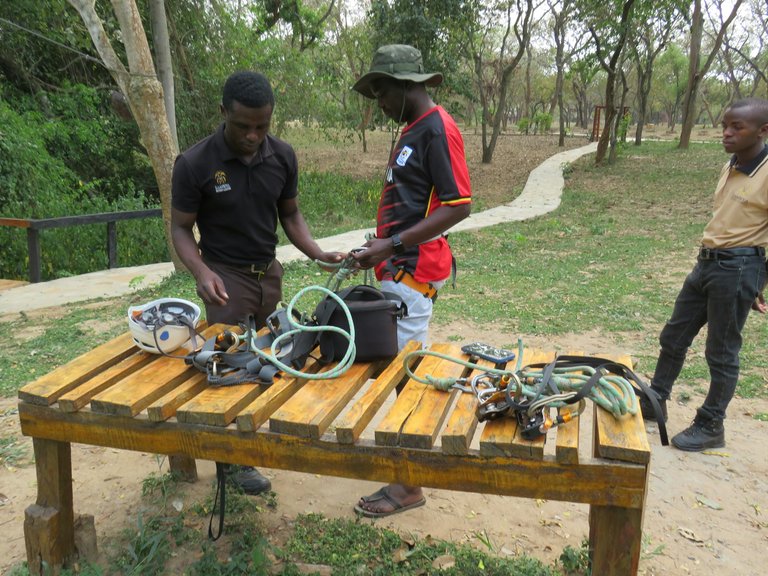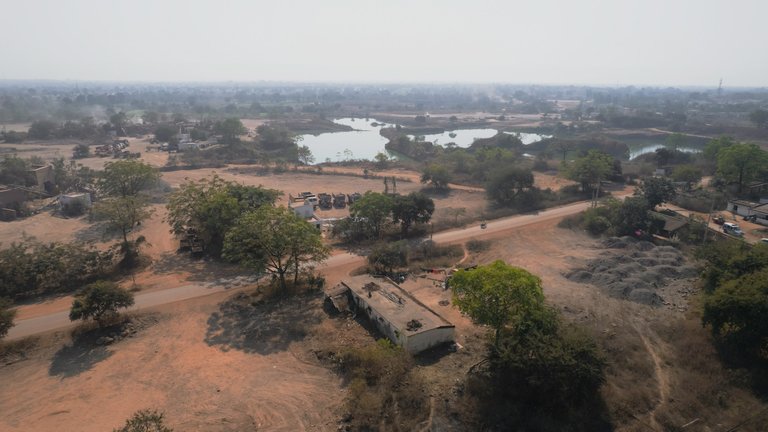Bitcoin in the Jungle: The Story of a Revolutionary Mining Project in a Remote Area of Zambia
In a remote area of Zambia, where it is difficult to speak over the roar of a waterfall, a strange sound can be heard—a siren-like sound in the ears of a computer. It is not a distress signal, but the sound of Bitcoin mining. In the local language, some call it the “sound of money.”

Src
A mine has been set up in the area that runs entirely on a small hydroelectric power plant. The electricity is generated from Zambia’s famous Zambezi River, which constantly flows through huge amounts of water. Normally, water and electronics don’t mix well. However, in the case of this mining project, the proximity of the river is a blessing.
The project is being run by a company called ‘Gridless.’ They are setting up mines in remote areas of Africa where electricity is generated but not properly utilised. In this location, a hydroelectric power plant was built to power an old missionary hospital—which late, began to power the entire village. But the problem was, most of the power from this power plant was wasted, because the villagers had a very low electricity usage rate.
This is where Bitcoin mining comes in. Gridless’ Bitcoin mine uses that excess electricity. This can increase the power plant’s revenue and lower the cost of electricity for the villagers.

Src
The mine generates a few dollars per day from each computer. While that may sound small, when more than 120 machines are working together, the revenue figure becomes quite large. Gridless has entered into a revenue-sharing agreement with the electricity provider, so that both parties benefit.
The lives of the villagers have also changed. Those who previously did not have electricity are now able to start small businesses. One barber said that after the electricity came, he bought a television, a light, and a clipper—all at once. Now his shop has become a centre of entertainment, where young people gather.
Young women Tumba and Lucy say that before their lives were in darkness, there was no mobile charging system, no refrigerator, TV, or internet. Now, after the arrival of electricity, a new horizon has opened up in their lives.
However, Bitcoin mining will not stop here. The power plant has now received a larger investment and is being connected to the national grid. As a result, their excess electricity will now be sold directly to the grid, and in that casee Bitcoin mining will no longer be profitable.
Gridless says that they are looking for many more places where mining can be done with unused electricity. They also plan to build their hydroelectric power station in the future. Their goal is to make a profit by mining Bitcoin on the one hand, and on the other hand, provide electricity to remote areas.
However, there are challenges. Many governments and institutions think that Bitcoin mining wastes electricity. They think that villagers need that electricity more. But Gridless says it will always sell power to the buyer who can pay the highest price, and that will almost always be a local person.
Bitcoin mining is controversial in many countries around the world. In the US, mining often has problems with local power supplies. But projects like Zambia show how, with the right planning, technology can be a tool for change.
This is not just a story about Bitcoin mining. This is a story about technology changing a region, a village, and hundreds of lives.
Posted Using INLEO
What an inspiring story of innovation in Zambia! Turning the roar of waterfalls into the sound of opportunity is truly brilliant. It's amazing how Bitcoin mining is helping utilize wasted electricity while improving villagers' lives - from barber shops becoming entertainment hubs to empowering young women like Tumba and Lucy. The Gridless project proves technology can be a force for good when implemented thoughtfully. Though challenges remain, this shows how creative solutions can bring light (literally and figuratively) to remote communities. The river's power is now powering dreams!